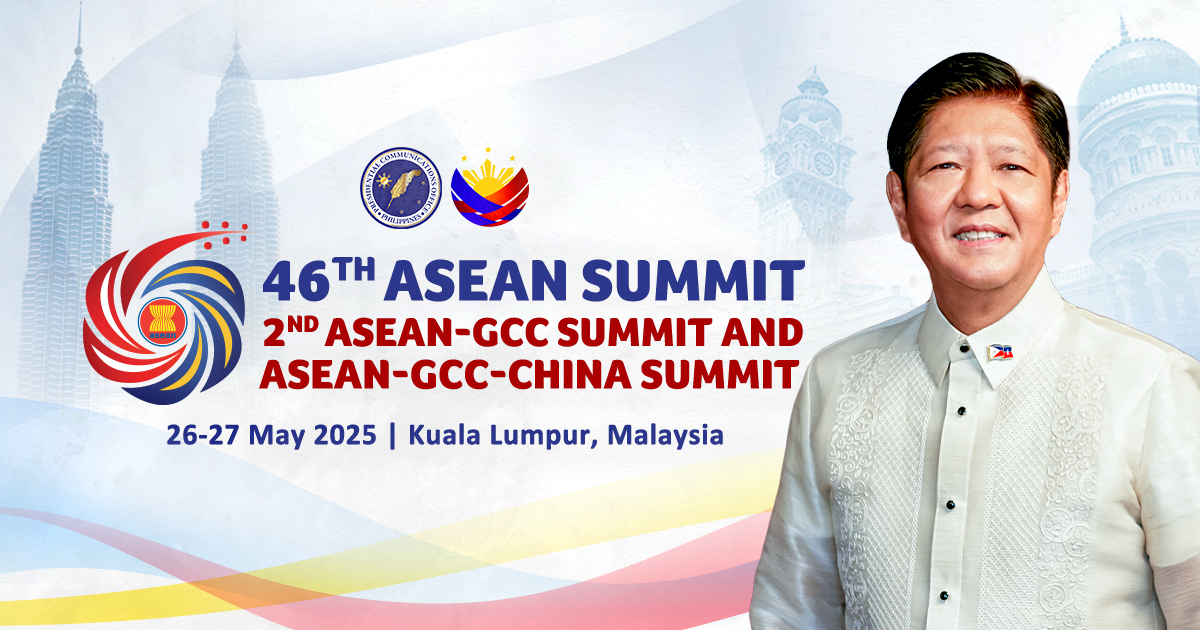May 26, 2016 – News Releases
 |
| 26 May 2016 |
|
|
|
| President Aquino unveils Angat Water Transmission improvement project |
| President Benigno S. Aquino III on Thursday unveiled the Angat Water Transmission Project at the Ipo Dam in Norzagaray, Bulacan.
The project involves the construction of a new tunnel (Tunnel No. 4) from Ipo to Bigte in Norzagaray that aims to ensure a sustainable water supply and to reduce the risk of a partial or total disruption of water supply to Metro Manila, Rizal, Bulacan and portions of Cavite. The new tunnel has a diameter of four meters, a length of 6.4 kilometers, and a design capacity of 19 cubic meters per second (1,600 million liters per day). The contract for the design and construction of the project costs P3.3 billion, which will be funded through a loan from the Asian Development Bank (ADB).The new tunnel will also provide redundancy and allow further rehabilitation work on the raw water transmission system. The raw water transmission system’s main components are at least 75 years old, in poor condition and most likely not compliant with current structural and seismic requirements.“Pinag-aralan nga po natin ang kailangang gawin, para matugunan ang mga pangangailangan, hindi lang ngayon, kung hindi maging sa mga darating na panahon. Nagkaroon po tayo ng pagsusuri sa Umiray-Angat-Ipo system, partikular na sa Tunnels 1 to 3, at Aqueducts 3 to 5. Ang natuklasan po: Ang mga tunnels ay marupok na dahil sa kalumaan, kaya kailangan nang patibayin. Ang aqueducts naman, may tagas na. Ang leakage po raw nito, tinataya sa 2.2 cubic meters per second, o nasa 5 percent ng total water flow. Maraming tubig po ang nasasayang dito, na dapat sana, buong natatanggap ng ating mga Boss. Ang atin pong solusyon: Magtatayo tayo ng panibagong tunnel, para maisaayos ang mga pasilidad; at ang maganda nga po, gagawin natin ito sa paraang hindi maaantala ang supply ng tubig sa Metro Manila at mga karatig-lugar,” President Aquino said in his speech. “Saklaw nga po ng proyektong pagtatayo ng isang 6.4 kilometers na tunnel mula Ipo Dam hanggang Bigte Basin, o ang tinatawag na Tunnel 4. Magbibigay-daan ito sa halinhinang pagsasara ng Tunnels 1 to 3 at Aqueducts 3 to 5, habang sila naman ay sinusuri at isinasaayos. Oras na makumpleto, magkakaroon ng kapasidad ang Tunnel 4 na maghatid ng 1,600 million liters ng tubig kada araw. Sa kabuuan, masisiguro ng proyektong ito na mayroong sapat, malinis, at maaasahang supply ng tubig mula sa Angat Dam para sa tinatayang 14 na milyong residente ng Metro Manila, at mga iba pa natin mga kababayan sa mga bahagi ng Rizal, Bulacan, at Cavite,” he further said. President Aquino said the project was approved by the National Economic Development Authority (NEDA) in 2014. “Noong ika-29 ng Mayo noong 2014 po na-aprubahan ng NEDA Board ang proyektong ito, na pinu-pondohan naman ng Asian Development Bank sa halagang 3.3 billion pesos. Ngayong buwan, sisimulan na ang detailed design at iba pang pre-construction activities para sa pagtatayo nito, at inaasahang makukumpleto ang proyekto sa Setyembre ng taong 2020,” said the Chief Executive. He noted that these are part of the Water Security Legacy Program to ensure a more efficient water service for the country. “Para naman sa Bulacan Bulk Water Supply Project, nagtayo na tayo ng water treatment plants, pumping stations, at water reservoir, para direktang makapag-supply ng tubig dito sa inyo pong minamahal na probinsya. Ang Kaliwa Dam Project naman, magsisilbing karagdagang pagpagkakataonn nan ng tubig para sa Metro Manila. Kita niyo naman po: Magkaka-ugnay ang ating mga proyektong ito, at naka-angkla sa iisang diwa— Ang tubig ay bukal ng buhay, at mahalagang matugunan ang pangangailangan nito ng ating mga Boss,” he added. Present during the unveiling ceremony were ADB Country Director Richard Bolt, Metropolitan Waterworks and Sewerage System (MWSS) Administrator Gerardo Esquivel, Local Water Utilities Administration chief Andres Ibarra, Bulacan Governor Wilhelmino Sy-Alvarado and Vice Governor Daniel Fernando, Norzagaray Mayor Alfredo Germar, and Italian Ambassador to the Philippines Massimo Roscigno. PND (jm) |
|
|
| President Aquino leads launch of irrigation, flood control project in Tarlac |
| (SAN JOSE, Tarlac) President Benigno S. Aquino III on Thursday led the launch of the second phase of the Balog-Balog Multipurpose Project (BBMP), which is expected to supply irrigation water and mitigate flooding in Tarlac province.
“Ngayong araw po, minamarkahan natin ang simula ng isa na namang proyektong magdadala ng benepisyo sa ating mga Boss — ang Balog-Balog Multipurpose Project Phase 2,” the President said in his speech during the launch of the project. “Panibagong patunay ito sa gobyernong tunay na nakatutok sa kanyang mandato — ang pagsilbihan at arugain ang atin pong taumbayan.” The P13.3 billion irrigation project involves the construction of the Balog-Balog earth-filled dam in the upper Bulsa River, and irrigation canals and other structures. Aside from helping boost the agriculture sector, the project’s benefits include flood control and mitigation, inland fish production, and possible power generation of about 43.5 megawatts. The project, which will involve civil work, will benefit nine towns in Tarlac — Paniqui, Pura, Ramos, Victoria, Gerona, San Jose, Lapaz, Capas, and Concepcion, as well as Tarlac City. Civil work covers the construction of a 105.5-meter tall dam, a diversion tunnel, the 60-kilometer (km) main irrigation canal, and the 248-km lateral canals. The project also includes right of way acquisition, the creation of 140 irrigators’ associations in the nine towns and Tarlac City, the resettlement of 745 families, and the allocation of 2,000 hectares of land for watershed management. The National Irrigation Administration (NIA) said the construction of new canals will irrigate 21,935 hectares of new farming areas, including upland farming in San Jose. It will also stabilize irrigation supply for 12,475 hectares in existing service areas in BBMP Phase 1, NIA said. According to the agency, the project is also expected to boost cropping intensity in the project area from 124 percent to 200 percent, which will raise crop production and farm income levels. The completion of the Balog-Balog Multipurpose Project will also boost eco-tourism in Tarlac, NIA said. PND (as) |
|
|
| President Aquino inaugurates 10MW Solar Plant in Cabanatuan City |
| (Cabanatuan City, Nueva Ecija) – President Benigno S. Aquino III has inaugurated the first solar plant in Barangay Lourdes, Cabanatuan City, Nueva Ecija on Thursday.
Upon arrival, the President was led to the stage for the ceremonial unveiling of the project marker. He was assisted by Cabanatuan City Mayor Julius Chiong, Trademaster Resources Corporation Chairperson Cris Giovanni Chiong and First Cabanatuan Ventures Corporation President Rosanna Ria Vergara, who is also the congresswoman-elect of Nueva Ecija’s Third District. President Aquino, who was introduced by Interior and Local Government Secretary Mel Senen Sarmiento, expressed his gratitude to the Trademaster Resources Corporation and the Cabanatuan Ventures Corporation for building the 10-megawatt solar project which was completed in January 2016. “Nagpapasalamat tayo sa lahat ng nagtulong-tulong upang marating natin ang tagumpay na ito. Special mention po ang First Cabanatuan Ventures Corporation at Trademaster Resources Corporation, na talagang nangahas at nagsikap upang matapos ang proyekto. Nawa’y dumadami pa ang mga tulad ninyo na katuwang natin sa paghahanap ng alternatibong pinagkukunan ng enerhiya,” said the President in his speech. “Ito na nga po ang panglima na solar project na ating napuntahan sa ilalim ng ating panunungkulan. Kung magtutuloy pa, makakabuti ito, hindi lang sa pagpapalawig ng ating energy mix, kundi pati rin sa pangangalaga sa ating kalikasan. Sa buong bansa po, nasa 33 porsyento na ang pinagkukunan natin ng enerhiya ay mula sa renewables gaya ng solar, geothermal, hydro, wind at biomass. Para naman maengganyo ang pribadong sektor, nagbigay tayo ng mga insentibo, gaya ng 7-year income tax holiday, 10-year duty-free importation ng mga renewable energy machinery, at ang Feed-in-Tariff rates. Sa patuloy pang pagpasok ng mga mamumuhunan dito, inaasahang maaabot natin ang target na renewable energy-based installed capacity, mula 5,439 megawatts noong 2010, patungong 15,304 megawatts sa 2030,” the President further said. “Kabilang lang po ang proyektong ito sa mahahalagang inisyatibang isinasagawa natin dito sa Nueva Ecija…mula 2011 hanggang 2016, nakapaglaan na tayo ng halagang 1.52 billion piso para sa flood control projects ng inyong probinsya. Sabi po sa atin ng butihing Kalihim Babes Singson, ongoing na ang feasibility study ng retarding basin para sa San Antonio swamp dito sa Nueva Ecija, pati na ang Candaba swamp sa Pampanga. Pareho itong bahagi ng ating Pampanga River Basin Flood Control Master Plan. Ang mga ito sasalo sa tubig na nagmumula sa Sierra Madre, at tutulong para maiwasan ang pagbabaha dito at sa mga karatig lugar,” the Chief Executive added. “Sa nakalipas ngang halos anim na taon, wala naman sigurong makapagsasabing binalewala natin ang usapin ng climate change. Inisip natin kung ano ang makabubuti sa kapakanan ng mas nakakarami; at ginawa natin kung ano ang tama at makatarungan, hindi lang para sa kasalukuyan, kundi pati na rin sa susunod na mga salinlahi,” the President said. It took one year to complete the P710-million solar plant which is expected to reduce 16,500 metric tons of carbon dioxide annually and around 330,000 metric tons of carbon dioxide over life of the project. The construction of the solar plant has provided jobs to 300 workers while 25 have been employed for the maintenance and operational stage. PND (jm) |
|
|
| Rule of law is still the great equalizer among South China Sea claimants, says President Aquino |
| SAN JOSE, Tarlac: With more than a month before stepping down from power, President Aquino reiterated his administration’s position in the South China Sea issue saying adherence to international law is still the best equalizer among claimant countries in resolving the dispute.
In an interview during the launch of an irrigation project here, the President also reacted to accusations that his administration committed treason as the Chinese took control of the Scarborough Shoal. The President said he’d like to hear the specific charge so that he can respond appropriately to the Scarborough issue. The President also argued that the Philippines can’t engage China in hostilities because it doesn’t stand a chance against the Asian giant. “If we engage in hostilities there, can we win? O ‘di obviously hindi. Pero even in that aspect, are we endangering lives unnecessarily? Iyong maski papasukan natin ‘yung moral dimension, I think it was parang Saint Thomas Aquinas who talked about Just War,” he told reporters. But one point is clear, he said: all of the claimants discussing the South China Sea keep on saying about adherence to international law. “And I think we have demonstrated our complete adherence to international law, number one; number two, all the agreements that this country has entered into, even before my time, we have been scrupulously observing the same,” the President said. This underpins that all the claimants believe that the great equalizer among nations, big and small, is adherence to international laws that should be binding on everybody, he pointed out. With regards to question about the Scarborough Shoal being the red line for the Philippines in its dispute with China, the President said there are many red lines. The first was when China prevented an exploration ship, which secured a service contract from the Philippine government, from doing its work in Recto bank few years ago, he said. The President also defended his administration response to China’s incursions in the Philippine territory. Among the country’s approaches was raised the issue to the ASEAN for the crafting of a binding code of conduct in the South China Sea. The ASEAN and China have so far agreed on the Declaration on the Conduct of Parties in the South China Sea in 2002. Sadly, the agreement is not being observed. The Philippines also filed a case in the international Arbitral tribunal, questioning China’s excessive claim through its nine-dash line. The tribunal at The Hague is expected to rule this year. China declined to participate, saying the tribunal has no authority over its South China Sea claims. Aside from the Philippines and China, other claimants include Vietnam, Malaysia, Brunei and Taiwan. PND (as) |



















